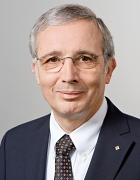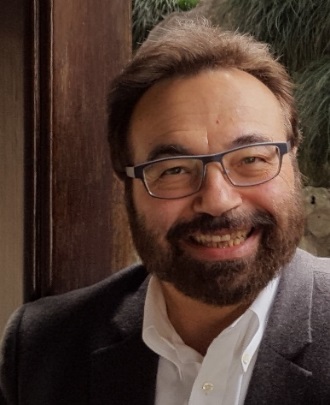Tutorials
-

Josef A. Nossek
Federal University of Ceara (Brazil) and TU Munich (Germany) -
Sunday, December 10, 2017, 09:30 am - 12:30 pm
The Multiport Communication Theory
Information theory serves well as the mathematical theory of communication. However, it contains no provision that makes sure its theorems are consistent with the physical laws that govern any existing realization of a communication system. Therefore, it may not be surprising that applications of information theory or signal processing, as currently practiced, easily turn out to be inconsistent with fundamental principles of physics, such as the law of conservation of energy. It is the purpose of multiport communication theory to provide the necessary framework ensuring that applications of signal processing and information theory actually do comply with physical law. This framework involves a circuit theoretic approach where the inputs and outputs of the communication system are associated with ports of a multiport black-box. Thanks to each port being described by a pair of two instead of just one variable, consistency with physics can be maintained. The connection to information theory and signal processing is then obtained by means of isomorphisms between mathematical (formal) symbols of the latter and the physical quantities of the multiport model. In this tutorial, the principles of the multiport communication theory are presented and accompanied by a discussion of a number of interesting results of its application to single and multi-antenna radio communications in single- and multi-user contexts. Among these results are a new mapping from uplink to downlink channel matrices of TDD systems based on reciprocity of the physical propagation channel and physical limitations of massive MIMO systems.
Biography
Josef A. Nossek (S'72-M'74-SM'81-F'93-LF'13) received the Dipl.-Ing. and Dr. techn. degrees in electrical engineering from Vienna University of Technology, Austria, in 1974 and 1980, respectively. He joined Siemens AG, Germany, in 1974, where he was engaged in filter design for communication systems. From 1987 to 1989, he was the Head of the Radio Systems Design Department, where he was instrumental in introducing high-speed VLSI signal processing into digital microwave radio. From 1989 to 2016, he has been the Head of the Institute of Circuit Theory and Signal Processing (NWS) at the Technische Universitat Munchen, Germany. In 2016, he joined the Universidade Federal do Ceara, Fortaleza, Brasil as a Full Professor. He was the President Elect, President, and Past President of the IEEE Circuits and Systems Society in 2001, 2002, and 2003, respectively. He was the President of Verband der Elektrotechnik, Elektronik, und Informationstechnik (VDE) in 2007 and the President of the Convention of National Associations of Electrical Engineers of Europe (EUREL) in 2013. He received the ITG Best Paper Award in 1988, the Mannesmann Mobilfunk (currently Vodafone) Innovations Award in 1998, and the Award for Excellence in Teaching from the Bavarian Ministry for Science, Research and Art in 1998. From the IEEE Circuits and Systems Society, he received the Golden Jubilee Medal for Outstanding Contributions to the Society in 1999 and the Education Award in 2008. He received the Order of Merit of the Federal Republic of Germany (Bundesverdienstkreuz am Bande) in 2008. In 2011, he received the IEEE Guillemin-Cauer Best Paper Award and in 2013 the honorary doctorate (Dr. h. c.) from the Peter Pazmany Catholic University, Hungary. He received the VDE Ring of Honor in 2014 and the TUM Emeritus of Excellence in 2016.
Presentation Presentation2-

Georgios B. Giannakis
University of Minnesota (USA) -
Sunday, December 10, 2017, 02:00 pm - 05:00 pm
Learning Nonlinear and Dynamic Connectivity and Processes over Graphs
Learning the topology of graphs as well as processes evolving over graphs are tasks emerging in application domains as diverse as gene-regulatory, brain, power, and social networks, to name a few. Scalable approaches to deal with such high-dimensional settings aim to address the unique modeling and computational challenges associated with data-driven science in the modern era of big data analytics. Albeit simple and tractable, linear time-invariant models are limited as they are incapable of modeling changing topologies, as well as nonlinear and dynamic dependencies between nodal processes. To this end, novel approaches are presented to leverage nonlinear counterparts of partial correlation and partial Granger causality, as well as nonlinear structural equations and vector auto-regressions, along with attributes such as low rank, sparsity, and smoothness to capture even directional dependencies with abrupt change points, as well as dynamic processes over possibly time-evolving topologies. The unifying framework inherits the versatility and generality of kernel-based methods, and lends itself to batch and computationally affordable online learning algorithms, which include novel Kalman filters and smoothers over graphs. Real data experiments highlight the impact of the nonlinear and dynamic models on gene-regulatory and functional connectivity of brain networks, where connectivity patterns revealed exhibit discernible differences relative to existing approaches.
Biography
Georgios B. Giannakis (F’97) received the Diploma in electrical engineering from the National Technical University of Athens, Zografou, Greece, 1981. From 1982 to 1986, he was with the University of Southern California, Los Angeles, CA, USA. where he received the M.Sc. degree in electrical engineering, the M.Sc. degree in mathematics, and the Ph.D. degree in electrical engineering, in 1983, 1986, and 1986, respectively. He was with the University of Virginia from 1987 to 1998, and since 1999, he has been a Professor with the University of Minnesota, Minneapolis, MN, USA, where he holds an Endowed Chair in Wireless Telecommunications, a University of Minnesota McKnight Presidential Chair in ECE, and is the Director of the Digital Technology Center. His general interests span the areas of communications, networking and statistical signal processing subjects on which he has published more than 400 journal papers, 680 conference papers, 25 book chapters, two edited books and two research monographs (h-index 119). His current research focuses on learning from Big Data, wireless cognitive radios, and network science with applications to social, brain, and power networks with renewables. He is the (co-)inventor of 28 patents issued, and the (co-)recipient of eight best paper awards from the IEEE Signal Processing (SP) and Communications Societies, including the G. Marconi Prize Paper Award in Wireless Communications. He also received Technical Achievement Awards from the SP Society (2000), from EURASIP (2005), a Young Faculty Teaching Award, the G. W. Taylor Award for Distinguished Research from the University of Minnesota, and the IEEE Fourier Technical Field Award (2015). He is a Fellow of EURASIP, and has served the IEEE in a number of posts, including that of a Distinguished Lecturer for the IEEE-SP Society
Presentation
-



